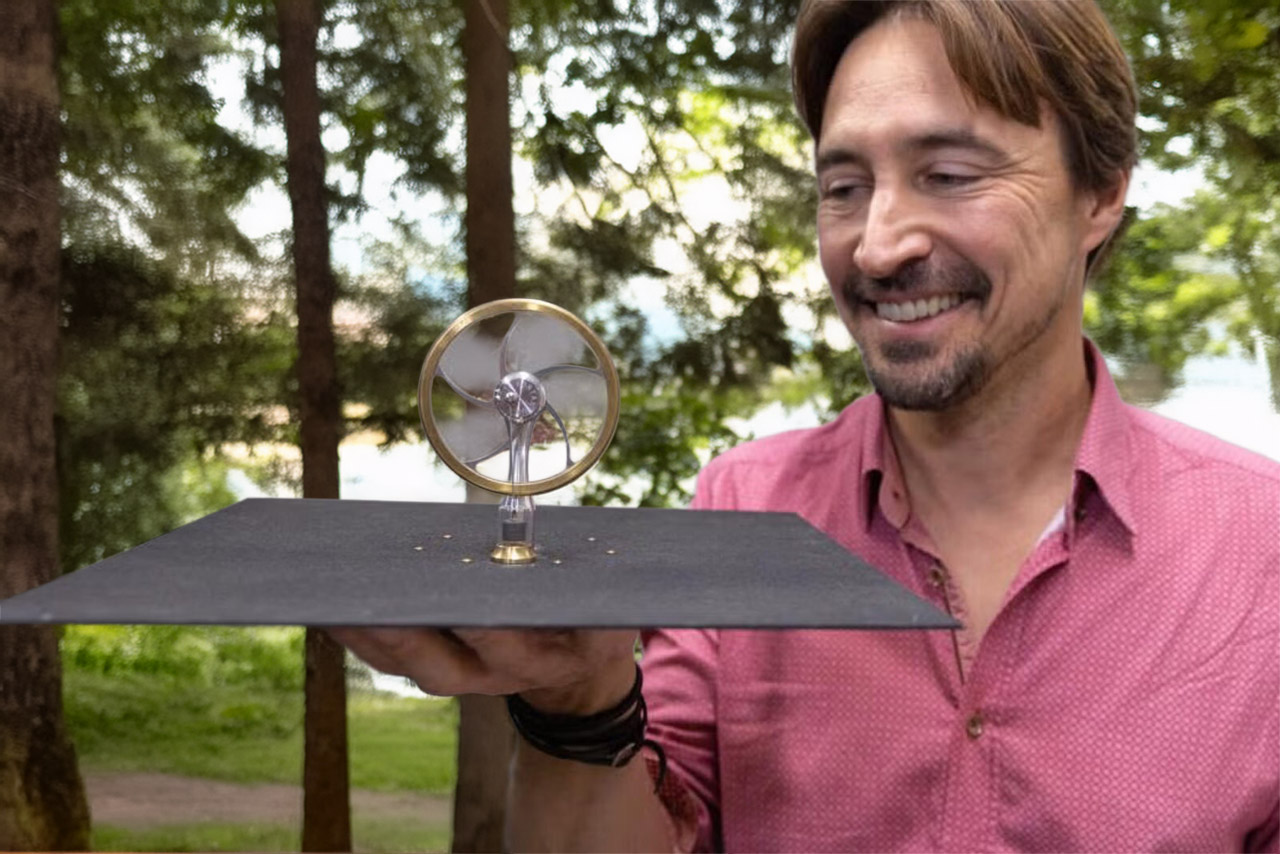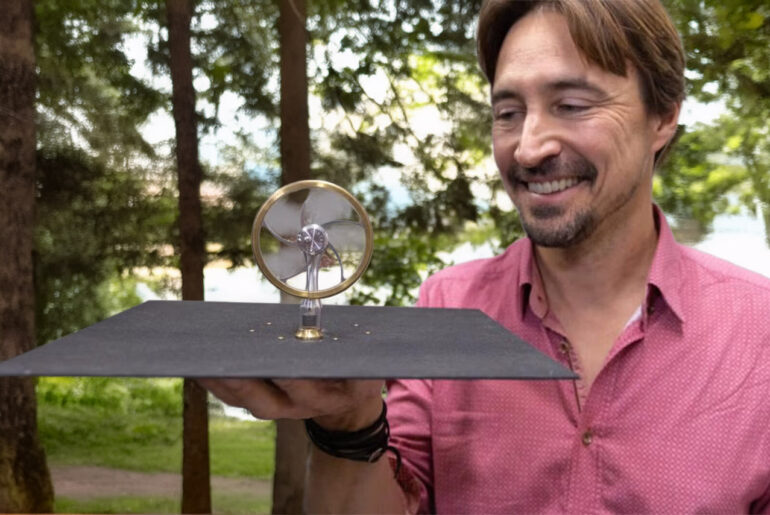
Photo credit: Mario Rodriguez | UC Davis College of Engineering
Engineers at UC Davis, led by Jeremy Munday and his super talented PhD student Tristan Deppe, have come up with a way to harness the power of nighttime darkness and turn it into – wait for it – actual motion. They were working with a pretty basic Stirling engine (one of those engines that generates power by using heat to push mechanical parts around) and took it to the next level, basically.
They took this device outside at night, where it absorbs heat from the earth and radiates any excess heat into space, and detailed their findings in a new article published in Science Advances. Put simply, they demonstrated that even a small fan can be powered by a tiny amount of light. This just goes to prove that the night has a lot more potential for productivity than we thought.
- FANTASTIC SMART THING WITH EXTREMELY WELL MADE WHICH RUNS LIKE A DREAM----The stirling engine is produced with high quality material and elegant...
- OPERATION EASILY----Pour a cup of hot coffee, put the stirling on the cup, it run magically. When it slows down, the coffee temperature is suitable...
- LONG LASTING----It can run for 24+ hours continuous without any broken if there are continuous power supplies. One customer put the stirling on USB...
Check out the snapshot from the UC Davis lab: Munday is holding up the prototype, which resembles a flat small laptop with a bright brass wheel in the center. He’s wearing a bright pink shirt and a big grin; it appears he’s onto something simple yet kinda profoudn. After months of experimenting and mucking around, his colleague Deppe assisted in putting everything together. They began with an off-the-shelf Stirling engine (a toy that gearheads enjoy playing with) and mounted it on a flat radiator with a nice paint job. And that paint is quite unusual; it allows the radiator surface to emit all of its infrared heat directly into the air, where it escapes into space without warming the air around it. The whole thing is held together with an aluminum bracket that stays in contact with the earth – even when the temperature drops.
Stirling engines are all about making small tweaks to get great results, in contrast to most power plants that try to just turn up the heat from the get-go. This one is happy to just hang out and know the difference between a warm sidewalk and a darkening night sky. Munday uses the example of a coffee mug left to cool on a desk – but nothing happens unless the inside and outside of the mug start to diverge. And if you try to keep this thing indoors, it just sort of idles away. But what’s magic here is that it’s all about separation – the earth gives up its heat & those chilly stars in space wait to take it away.
Deep space is only 3 degrees above absolute zero, a giant sink that absorbs radiation like an ocean. The panel faces up, away from clouds and moisture that could block the flow. On a dry night in Davis, the link forms easily. Heat rises from the engine base, spreads across the panel, and radiates out in invisible waves. The flywheel catches the beat, spinning slow and steady. Deppe and Munday ran it for a year under different conditions. Every time, it worked, turning the cosmic breeze into a push.

Photo credit: Deppe and Munday, 2025
The test results show a clear picture: the panel dropped 10 degrees between the faces, enough to drive the piston without strain. 400 milliwatts per square meter of mechanical force, a low hum that got steadier with time. They hooked it up to a fan blade first, then watched air movement in an enclosed chamber. The motor kicked in and sparks flew from the spin. One night they put it in a small greenhouse. When they replaced the flywheel with bigger blades, enough air was moving to keep the air inside stable and the plants inside didn’t develop mold or stale air when they settled in for the night.
Greenhouse tests open up more possibilities, as farmers in dry places where the stars breach the dome every night can line up rows of these units. Fans would hum all day, keeping roots from drowning in trapped heat and increasing yields even without a grid connection. Homes could do the same by installing quiet vents in attics or walls that bring in fresh air when the world is quiet.
[Source]










